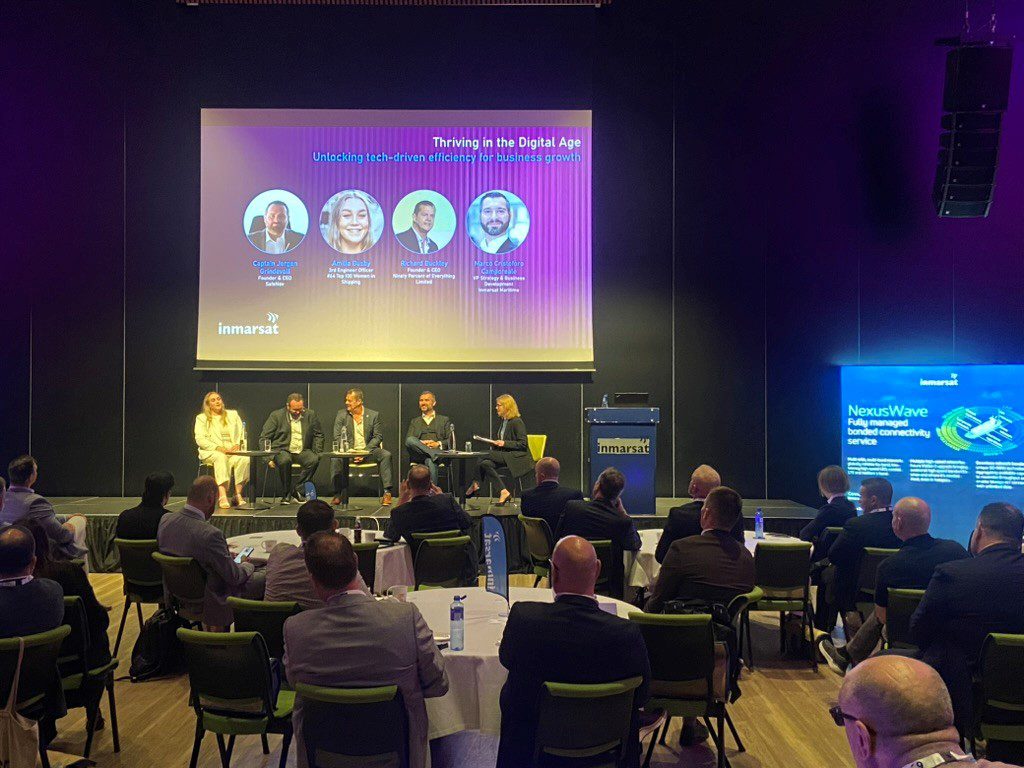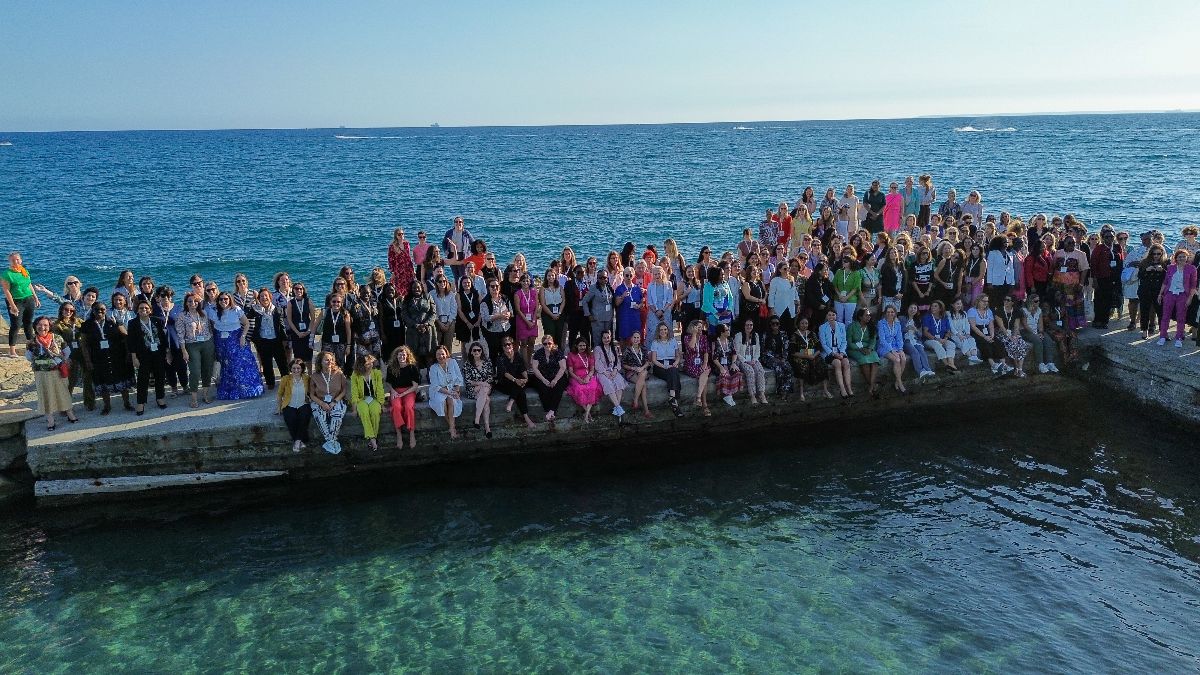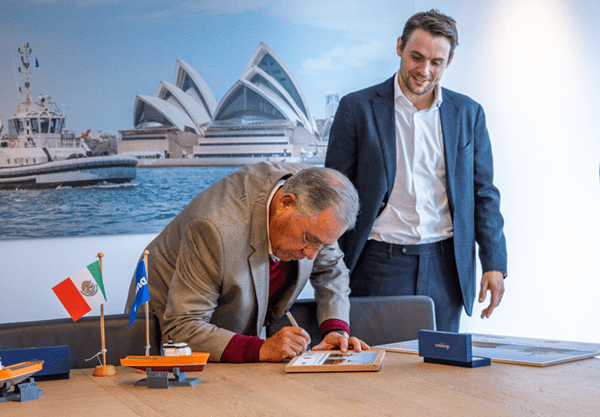Panellists at an Inmarsat ‘Thriving in the Digital Age’ seminar urged a step-by-step approach to maritime digitalisation with due consideration for the ‘human in the loop’.
Maritime digitalisation promises ample reward to those willing and able to embrace it. However, for the many shipping companies still heavily dependent on manual processes, the adoption of advanced technology cannot be rushed. To ensure a smooth and successful digital transformation, maritime organisations should take a measured, incremental approach centred on relevant crew training, improved ship–shore collaboration, and high-quality connectivity.
This was the overarching message from Inmarsat’s latest ‘Thriving in the Digital Age’ seminar. Hosted on 4 June 2025 to coincide with Nor-Shipping in Oslo, Norway, the session conveyed a tone of optimism offset by an acceptance of how far the industry remains from its digitalisation goals – and a sense of caution over how quickly they can reach them.
“We need to be careful not to rush into it too fast, and to take the necessary steps to implement the infrastructure and training with digitalisation,” advised Amilia Busby, who serves as Third Engineer Officer aboard a semi-autonomous trailing suction hopper dredger.
In her three-year cadetship, Amilia Busby was taught all there is to know about engines, she said, “but we didn’t touch on anything to do with digitalisation”. Now working on board a vessel whose engines can be started from the bridge, she feels that she and her shipmates would have been better served learning the knowledge and skills required to excel in shipping’s digital age.
Adding that much of her training focused on steam vessels, a relative rarity in today’s maritime industry, she asked: “Was that wasted content? Could we have been doing something better to give these seafarers the knowledge they need?”
A lack of relevant training content may be symptomatic of an ongoing disconnect between decisions made on shore and the lived experience of seafarers. “The guys making the decisions are normally in the shipping offices, but they haven’t actually been on board,” observed Captain Jorgen Grindevoll, founder and CEO of navigation software developer SafeNav.
As a result, projects and ideas initiated on shore often fail to take account of realities on board, Captain Grindevoll explained, adding that maritime organisations should design new systems “with the human in the loop” before gradually increasing to higher levels of automation. Even a tool as simple as video conferencing, supported by high-speed connectivity, could meaningfully improve cooperation between ship and shore, he suggested.
Richard Buckley, founder and CEO of maritime software provider 90POE, echoed Jorgen Grindevoll’s calls for a stepwise approach to onboard digitalisation while tempering expectations regarding the pace of change. “We are an industry that still today operates on a common denominator of manually curated noon reports, so to say this industry is truly embracing digital technologies today, I think, is an unfair statement,” he commented.
Nevertheless, Richard Buckley described himself as “optimistic about where we’re going in the future” thanks to the “pockets of innovation” emerging throughout the maritime community. To achieve its digitalisation goals, he said, the industry should move beyond the ship–shore narrative and fully embrace the floating office concept enabled by always-on, high-bandwidth connectivity. “We need to see people working on board vessels as part of the fleet capability, as much as those working in the office, and stop differentiating between ship and shore.”
Altogether, the panellists’ comments painted a picture of an industry at the crossroads between the old ways and the new, where progress on digitalisation is unevenly distributed.
Marco Cristoforo Camporeale, VP Strategy & Business Development, Inmarsat Maritime, indicated that data traffic on Inmarsat’s networks has been “doubling almost every two years in the last four to five years”, with the portion of traffic related to business use “growing rapidly”.
If the industry’s increasing appetite for data reflects a universal readiness to embrace digitalisation, figures on the global connected fleet offer a stark reality check. Of the 169,000 ships registered with the International Maritime Organization, only 46,000 – fewer than a third – have a VSAT system on board, reported Marco Cristoforo Camporeale. A lack of widespread connectivity remains a major barrier to the industry’s digital transformation, he observed.
Citing a BIMCO study, he added that shipping faces a shortfall of “around 120,000 officers” – and with the global fleet growing at “one per cent or more every year”, the industry’s labour shortage is only intensifying. “There has to be a way we can do more – through automation – with the same number of people,” he said. “In the short term, we need more people on ships.” Yet without connectivity, he asserted, three in four seafarers “won’t get on board”.
Highlighting just how fundamental onboard internet is for seafarers – not only to their daily lives at sea but also to their wider career prospects – Amilia Busby reported: “My ship only just got a Wi-Fi connection, and if I didn’t have my Wi-Fi connection on my last trip, I wouldn’t have seen the email inviting me to this event. So, connectivity is massive – especially for people like me who want to get involved with the industry outside of being a seafarer.”
Ultimately, the panellists agreed that the industry is heading irrevocably towards full digitalisation and, eventually, widespread autonomy. Yet for as long as humans remain ‘in the loop’, relevant training, smooth ship–shore interfacing, and high-quality crew connectivity will be essential.
Tags:

 Join The Club
Join The Club











